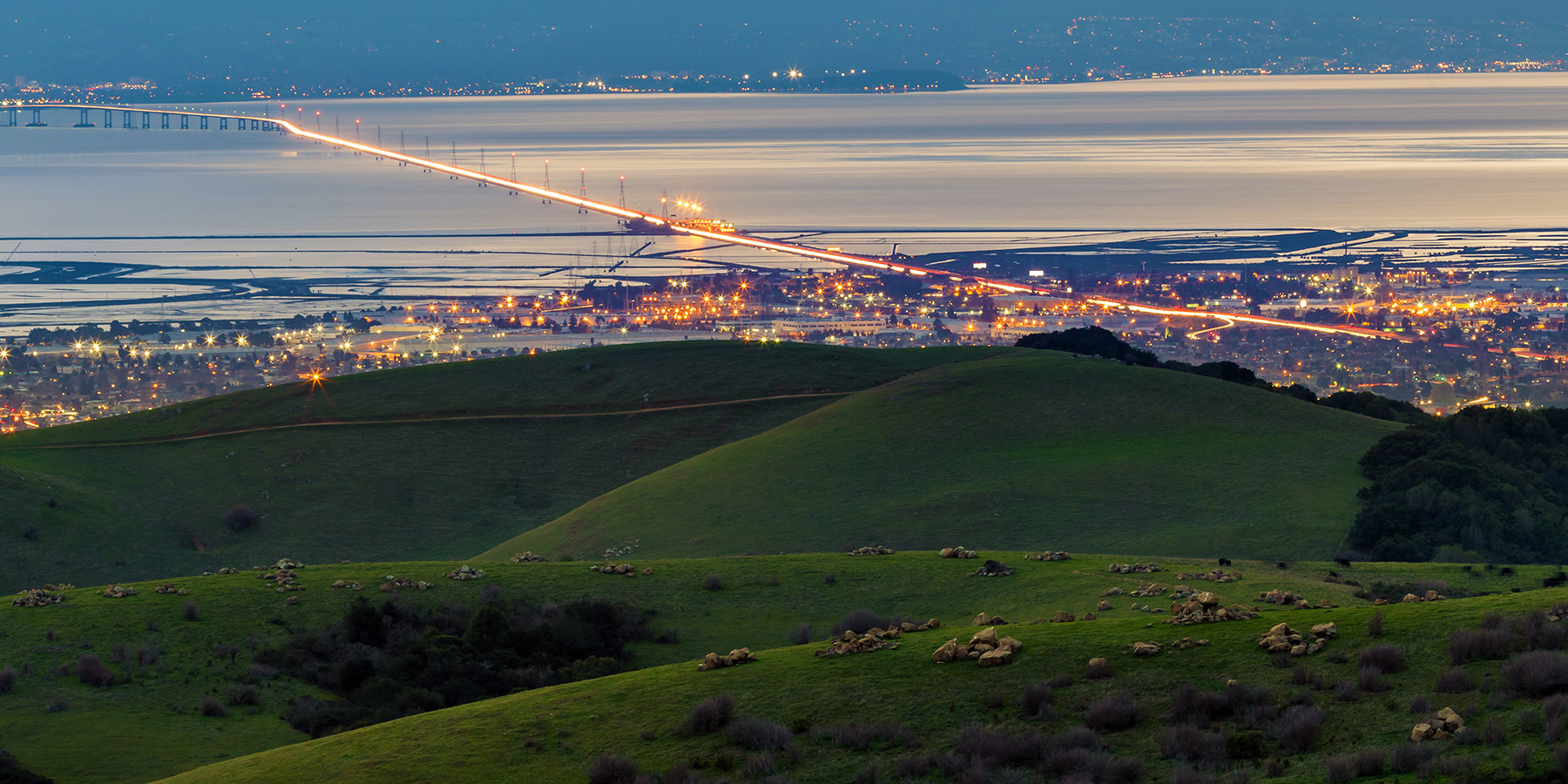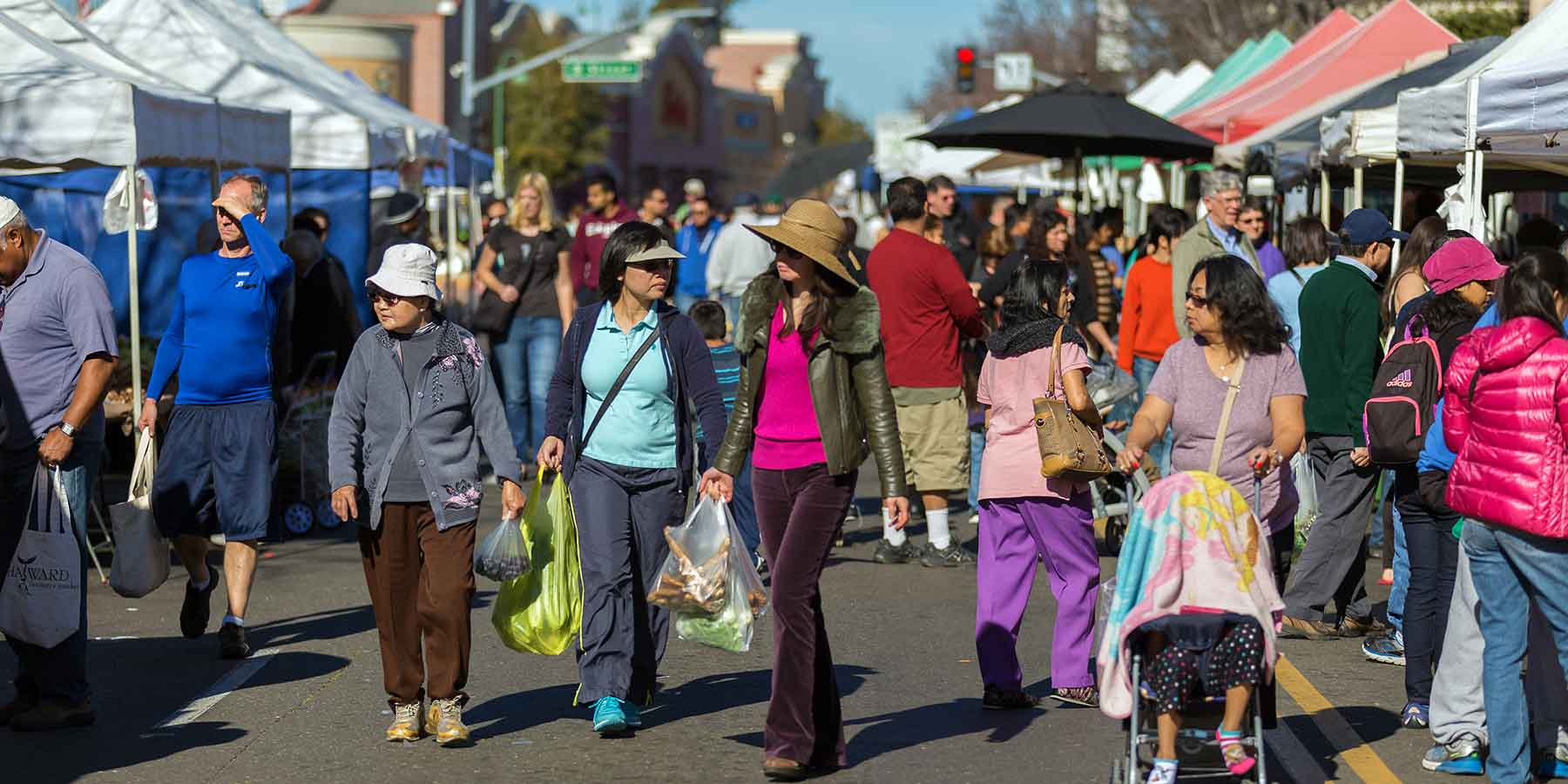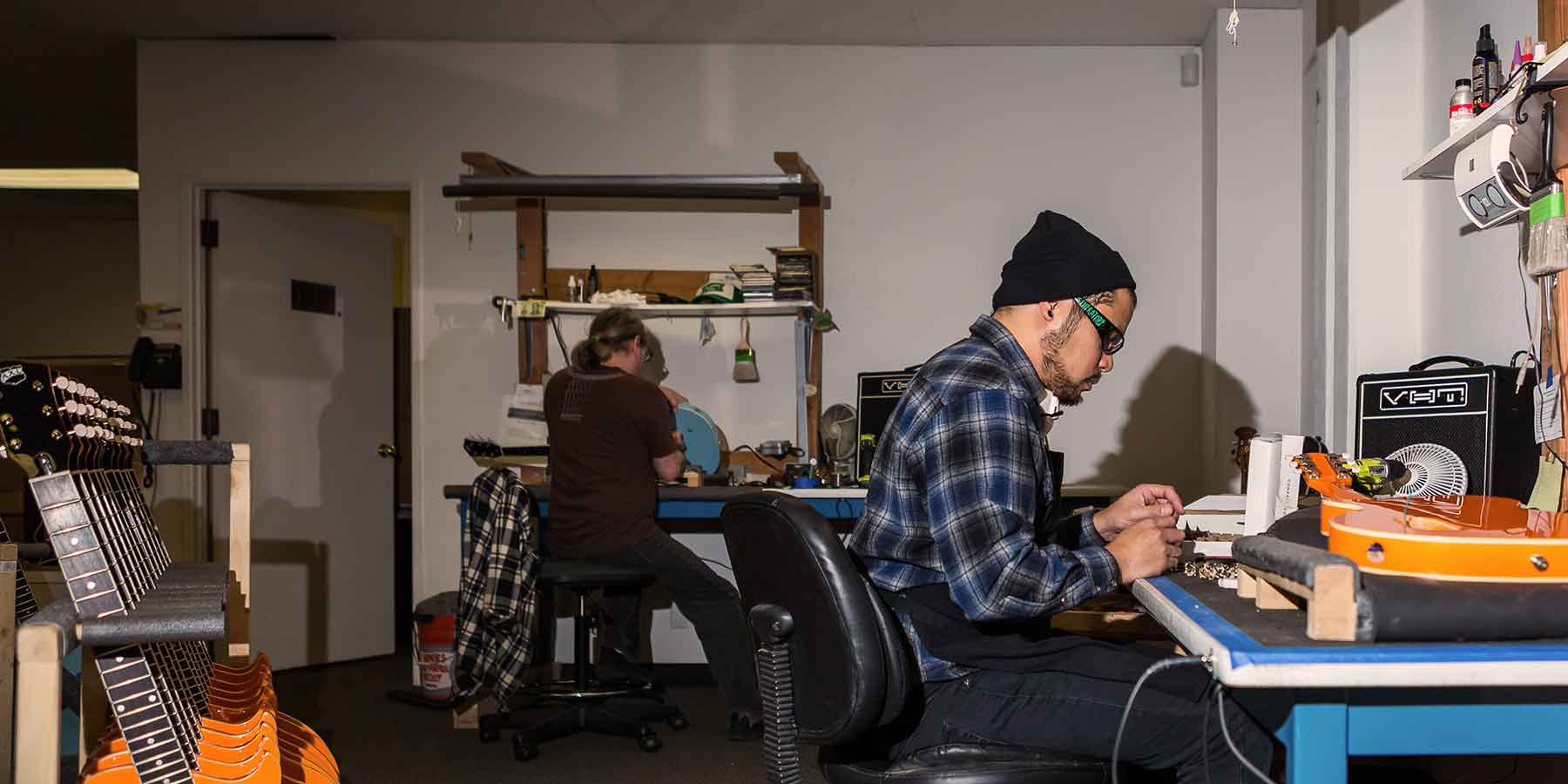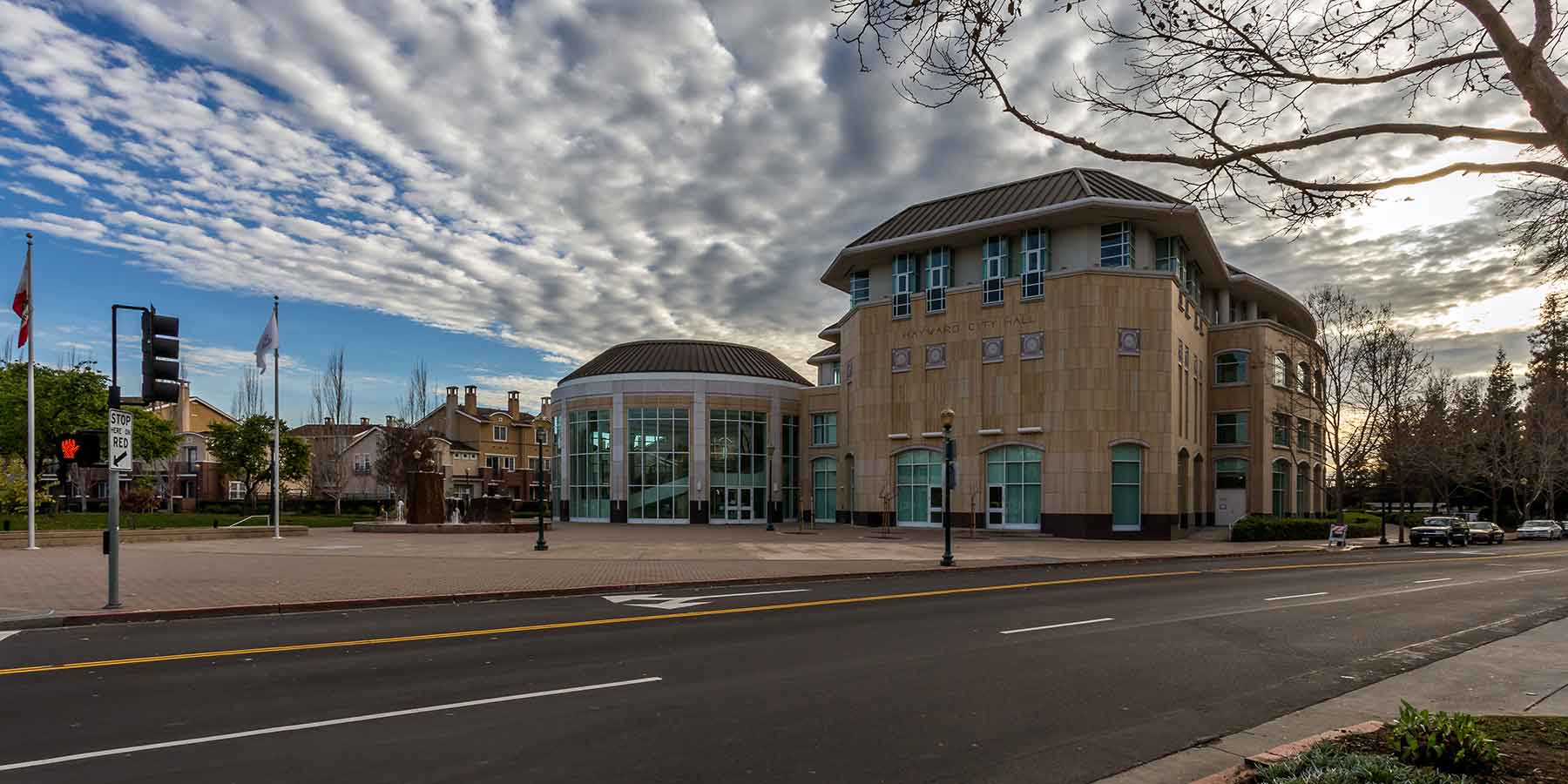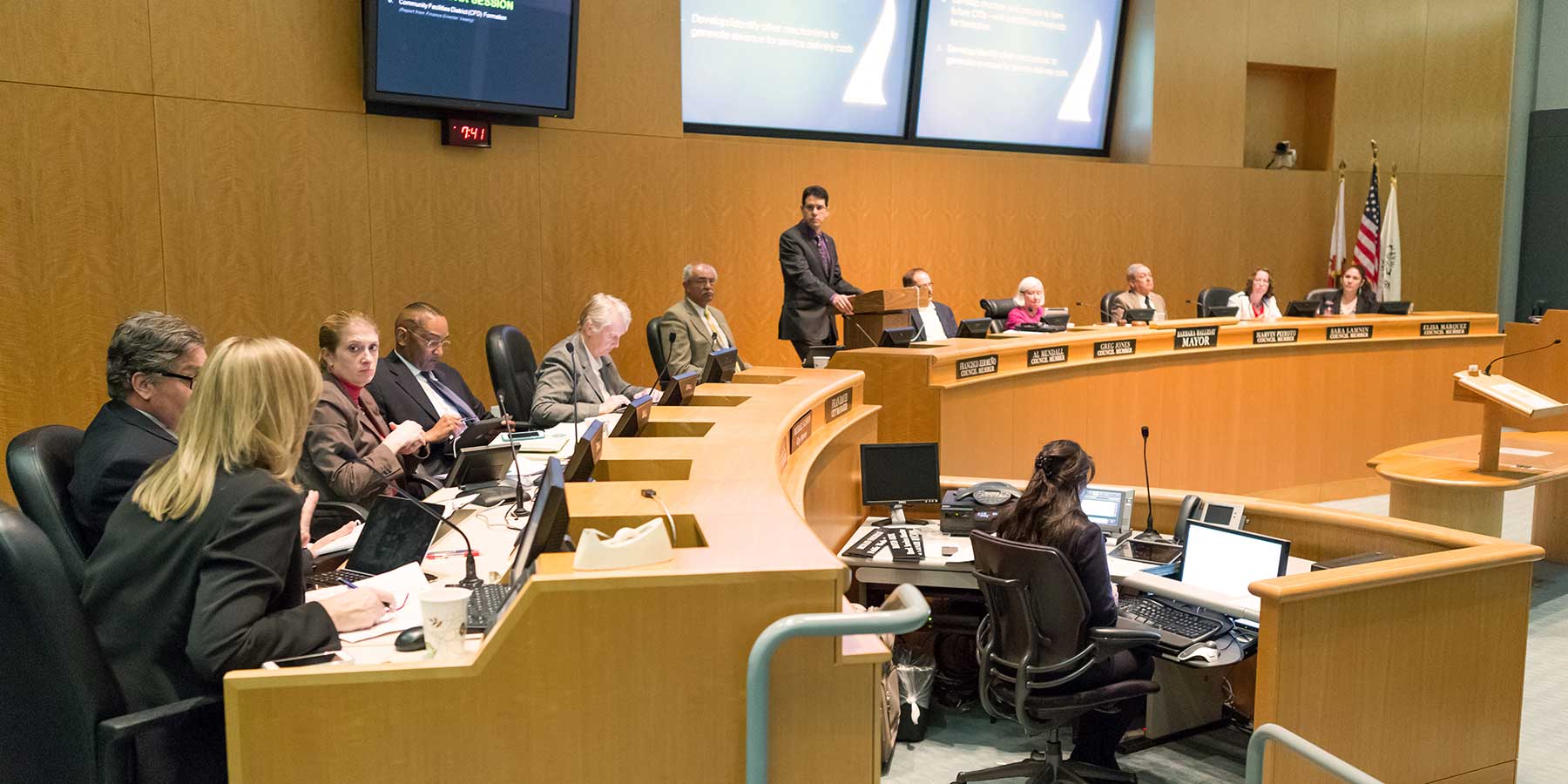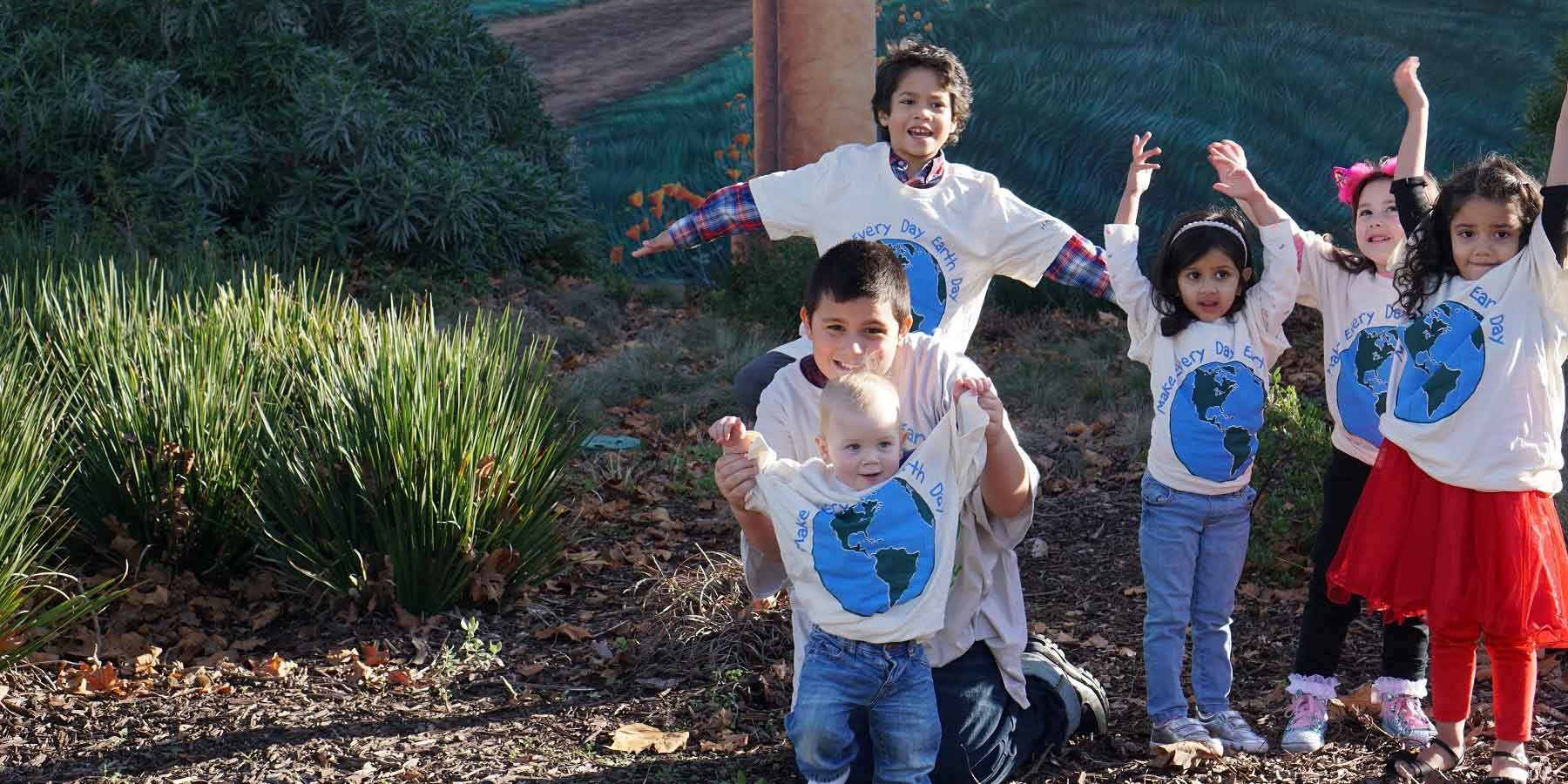City of Hayward 2040 Vision
Hayward will be a distinct and desirable community known for its central Bay Area location, vibrant Downtown, sustainable neighborhoods, excellent schools, robust economy, and its growing reputation as a great college town. With a variety of clean, safe, and green neighborhoods, and an accessible network of parks and natural open space, Hayward will be home to one of the most diverse, inclusive, educated, and healthy populations in the Bay Area. It will be a destination for life-long learning, entertainment, arts and culture, recreation, and commerce. It will be a community that values diversity, social equity, transparent and responsive governance, civic engagement, and volunteerism. Hayward will be a thriving and promising community that individuals, families, students, and businesses proudly call home.
Guiding Principles
The following guiding principles further express the community’s priorities and focus for achieving the 2040 Vision:
Hayward should value, challenge, and support youth by providing excellent public schools and youth enrichment activities and programs.
Improving Hayward’s public schools and enriching the lives of Hayward’s youth is a major priority of the Hayward community. While the City of Hayward does not have direct control over school administration or curriculum, it will expand and improve its youth enrichment services and programs and work with local school districts to provide access to cutting-edge technology, improve school safety and security, enhance school performance, and upgrade school facilities to create exceptional environments that foster school and community pride. Improving school performance will require coordination and collaboration with school administrators, teachers, parents, businesses, volunteers, the Hayward Area Recreation and Park District, and non-profit organizations. The City will develop policies and strategies to form new partnerships, seek creative solutions, and strategically invest resources to improve education, library services and programs, and other youth enrichment activities and programs offered throughout Hayward’s neighborhoods. The goal is to improve education and schools so that they are an asset that attracts and retains families and businesses to the Hayward community.
"Let us think of education as the means of developing our greatest abilities, because in each of us there is a private hope and dream which, fulfilled, can be translated into benefit for everyone and greater strength for our nation." - John F. Kennedy, 35th President of the United States
Hayward should have safe and clean neighborhoods with an expanded network of parks and thriving commercial centers that incorporate attractive design, provide easy access to jobs, support a diverse population, encourage long-term residency, and inspire all residents to live active, healthy, and green lifestyles.
The City of Hayward has a strong tradition of neighborhood planning and has made significant efforts to improve the safety and cleanliness of many Hayward neighborhoods. Despite these efforts, many neighborhoods are still struggling with pockets of blight and crime. Others lack convenient access to shopping, community services, healthy food, and parks and recreational uses. The City will adopt policies and strategies to transform Hayward’s neighborhoods into safe, clean, and green communities that encourage long-term residency. The goal is to create complete neighborhoods that offer a high-quality of life and support a diverse, healthy, and civically-engaged population. The City will develop policies and strategies to rehabilitate homes, preserve historic neighborhoods, improve the energy and water efficiency of homes, address crime and safety, redevelop blighted properties, reduce homelessness, and improve neighborhoods with a mix of amenities, including parks, community centers, community gardens, affordable housing, farmers’ markets, and neighborhood shopping and dining. The City will also develop policies and strategies to support street improvements and developments that provide all residents (young and old) with a safe, convenient, and enjoyable environment to exercise, walk, bike, or take transit. Grass roots efforts to serve Hayward’s seniors and individuals with disabilities will also be supported. Universal Design policies and senior programs will help Hayward's older generation "age in place" and empower people of all ages to remain connected to their neighborhood and community.
"You take care of you and your family first. Then you go to your neighborhood, and then you spread it on out within the community." - Al Smith 42nd Governor of New York
Hayward should develop and enhance its utility, communications, and technology infrastructure; and provide exceptional police, fire, and emergency services.
The quality of the City’s infrastructure and police, fire, and emergency response services has a direct impact on Hayward’s overall quality of life. The City will develop policies and strategies to improve public safety through better partnerships between neighborhood and non-profit organizations, residents, businesses, and the Police and Fire Departments. This will include new policies and strategies to ensure that the community is prepared and equipped to survive impending disasters, such as wildland fires, coastal and stream flooding, and the next major earthquake in the Bay Area. The City will develop policies and strategies to maintain and enhance existing infrastructure, including roads, sidewalks, power lines, communications and technology infrastructure, and water, sewer, and storm drain facilities. Sustainable infrastructure improvements that reduce the long-term use of water, energy, and financial resources will be prioritized. The City will also develop policies and strategies to ensure that new growth and development does not constrain the City’s ability to provide adequate infrastructure and services to existing and future generations.
Hayward should be a business-friendly community that has a robust and diversified economy based in innovation, creativity, and local entrepreneurship.
Hayward has many assets that can help the City develop a robust and diversified economy, including an Industrial Technology and Innovation Corridor, Hayward Executive Airport, Downtown Hayward, Chabot College, and California State University, East Bay. With a central Bay Area location that is within 30 miles of San Francisco, the Silicon Valley, three international airports, and one of the largest marine ports along the west coast, Hayward is an ideal setting for local, regional and global businesses. The City also has excellent access to regional transportation routes, including freeways, freight rail, Amtrak, and BART. The City will develop policies and strategies to improve and diversify Hayward’s economy through private-sector investment that creates high-quality jobs, especially for Hayward residents. This will mainly be accomplished by making regulations and permit procedures more business-friendly, implementing branding and marketing programs to enhance the image of the City, and improving business attraction, retention, and expansion efforts to create unique business clusters and a diverse economic base. The City will also develop policies and strategies that support local entrepreneurship, research and development partnerships with colleges and businesses, a college-based population and economy, and the revitalization of commercial centers and corridors, including Mission Boulevard, Tennyson Road, Hesperian Boulevard, Jackson Street, the Southland Mall area, and Downtown Hayward.
Hayward should have a safe, walkable, vibrant, and prosperous Downtown that serves as an attractive area for business and a destination for shopping and dining, arts and entertainment, and college-town culture.
While many communities in the Bay Area have goals to develop a city center or downtown, Hayward is one community that is blessed to have an authentic and historic Downtown. Preserving and enhancing this important community asset is a major priority. While the City has made significant investments that have improved the Downtown, the historic core of the City is still struggling and is far from reaching its full potential. The City will develop policies and strategies to encourage private-sector investment that transforms Downtown Hayward into a safe, vibrant, and prosperous arts and entertainment district. Downtown will be a regional destination that offers enhanced shopping, dining, and cultural experiences for residents, families, students, and visitors. The City will also continue to support the development of Downtown housing to create new opportunities for people to live in a safe, mixed-use, walkable, and transit-oriented urban neighborhood. Through these initiatives, Downtown Hayward will emerge as the heart and soul of the Hayward community, where everyone gathers to interact, shop, dine, play, and celebrate.
Hayward should have a reputation as a great college town and a community that offers a wide range of opportunities for life-long learning.
Hayward is home to Chabot College, California State University, East Bay, and various professional and vocational schools, such as Life Chiropractic and Heald College. Despite this fact, Hayward does not function or have a reputation as a college town. Chabot College and California State University, East Bay, are generally known as commuter schools that serve students living throughout the greater Bay Area. In general, most students do not have a strong connection to the Hayward community. While they may attend classes in Hayward, they are generally living, socializing, and spending money in other communities. The City will develop policies and strategies to transform Hayward into a true college town by supporting more student and faculty housing and businesses that cater to college students, particularly in Downtown Hayward and along Mission Boulevard (by California State University, East Bay) and Hesperian Boulevard (by Chabot College). These policies and strategies will encourage collaboration with college officials to develop better “town-gown” relationships, create research and development partnerships with local businesses, and promote events and festivals that foster college culture and a sense of college and community pride. Developing into a true college town or “communiversity” will help diversify the City’s economic base, generate businesses and jobs, and help the City’s economy during future economic recessions. Hayward will also develop policies and strategies that provide all residents with access to life-long learning and educational development opportunities.
“College Towns… are comparatively recession-proof because they are dominated by schools and the students who form a consistent population of spenders.” - American Institute for Economic Research
Hayward residents, workers, and students should have access to an interconnected network of safe, affordable, dependable, and convenient transportation options.
Like many cities in California, Hayward’s transportation system and neighborhoods were largely developed with the assumption that the automobile would be the primary mode of transportation. Many current Hayward residents, students, and workers desire more transportation choices. The City of Hayward will continue to develop policies and strategies to support development patterns and transportation improvements that allow and encourage more and more residents, workers, and students to walk, bike, or take transit. The City recognizes that the automobile will still have a role in the future. However, the City will work to create a more balanced and multi-modal transportation system; a system that provides more options and choices for commuting and everyday trips. The City will continue to support compact and higher density residential and commercial development near BART and Amtrak stations, and along commercial corridors that are served by bus transit. This will allow people to live with less dependence on the automobile for everyday life, resulting in lower rates of automobile use and lower greenhouse gas emissions. Parking policies and standards will also be evaluated for developments in these locations. Enhanced transit or shuttle services between BART and Amtrak stations, Downtown Hayward, the city’s Industrial Technology and Innovation Corridor, Chabot College and Cal State University, East Bay, will also be developed to provide more travel options for residents, workers, and students. The City will also develop policies and strategies to support infrastructure improvements that give all people (young and old) safe and convenient opportunities to engage in active transportation, such as walking and biking. Policies and strategies will also address the transportation needs of seniors and people with disabilities by improving the reliability of para-transit services and enhancing sidewalks, walking paths, and curb cuts and ramps for wheelchair users and pedestrians.
Hayward should preserve, enhance, increase, and connect its baylands, hillsides, greenway trails, and regional parks to protect environmental resources, mitigate the impacts of rising sea levels, and provide opportunities to live an active outdoor lifestyle.
The natural baylands and hillsides that define the western and eastern edges of the City are major community assets and valuable environmental resources. They provide habitat for a variety of plant and animal species, contribute to the ecological health of the San Francisco Bay, and provide residents with opportunities to exercise, enjoy nature, and view scenic resources. These open space resources and passive recreational opportunities should be preserved and enhanced to improve the ecology of the San Francisco Bay Area and Hayward’s overall quality of life. The City will work in partnership with the East Bay Regional Parks District and the Hayward Area Recreation and Park District to develop policies and strategies to preserve and protect environmental resources, respond to rising sea levels, promote environmental stewardship, connect the baylands and hillsides with greenway trails, and expand access to compatible recreational activities within the bay, baylands, and hillsides, such as kayaking, boating, hiking, and biking.
"Look deep into nature, and then you will understand everything better." - Albert Einstein, Theoretical Physicist


